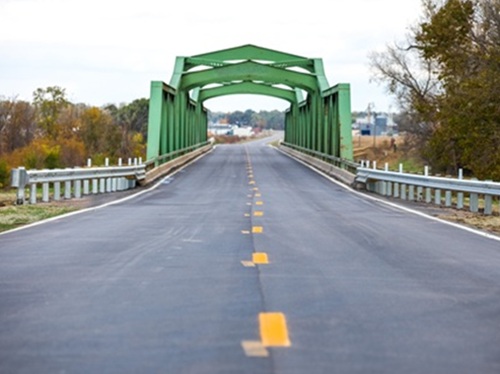The American Association of State Highway and Transportation Officials (AASHTO) recently helped the National Association of Regulatory Utility Commissioners (NARUC) Center for Partnerships & Innovation and the National Association of State Energy Officials (NASEO) develop a new guidebook for state-level transportation electrification efforts.
[Above photo by the Arizona DOT]
Published under the auspices of the National Council on Electricity Policy, the new 12-page publication – entitled “Mini Guide on Transportation Electrification: State-Level Roles and Collaboration among Public Utility Commissions, State Energy Offices, and Departments of Transportation” – is the eighth in a series of reports promoting dialogue among state-level electricity decision makers by highlighting examples of successful engagement.

Each “mini guide” features interviews with state energy offices, state departments of transportation, and public utility commission officials on the “collaborative approaches” and lessons learned from ongoing electric vehicle or EV infrastructure planning and implementation efforts.
The mini guide also outlines the typical roles played by state agencies during the EV deployment process. It also illuminates how state agencies can better coordinate to achieve state energy policies, upgrade transportation corridors, identify equitable charging station placement, and design rates for vehicle charging across the states.
Included in the guide are condensed excerpts from interviews with state energy office, state department of transportation, and public utility commission officials from three states: Florida, Michigan and Utah. A few key themes emerged from the interviews: Identifying the specific roles each agency plays allows for smoother EV infrastructure deployment; the value of both formal and informal collaboration so each state agency can fulfill its respective EV mission; and collaboratively engaging public- and private-sector stakeholders increases opportunities for a state to benefit from transportation electrification.

By working collaboratively across agencies and with varying stakeholders, states can anticipate and handle the unprecedented opportunities and challenges associated with developing novel infrastructure at the intersection of energy, transportation and the electrical grid, noted AASHTO Executive Director Jim Tymon in a statement.
“The federal government has allocated an immense amount of funding for electric vehicle charging infrastructure through the Infrastructure Investment and Jobs Act, clearly marking it as a national priority,” he said. “As state DOTs work to deploy these funds, they will need assistance and technical expertise from their counterparts at sister state agencies, like state energy offices and public utility commissions. This guide offers some helpful examples of how to foster cross-agency collaboration, and can serve as a starting point for those conversations.”
[Editor’s note: In late September, the Federal Highway Administration issued final approvals for the EV infrastructure deployment plans submitted by all 50 states, the District of Columbia, and Puerto Rico. The agency initially approved 35 of those plans in mid-September.]
“This guide will be a great resource for state agencies to use as they collaborate on implementing the transportation electrification programs and various Infrastructure Investment and Jobs Act EV-related infrastructure programs,” added NASEO Executive Director David Terry.
“The publication of this mini guide is ideally timed for supporting the many states newly navigating the $7.5 billion National Electric Vehicle Infrastructure program that is supplemental to existing state and utility transportation electrification programs,” said NARUC Executive Director Greg White.
“NARUC’s board of directors passed a policy resolution that explicitly seeks to encourage state and federal agencies to collaborate with public utility commissions and we see this publication as a useful starting point,” he added.
 Nation
Nation
Registration Open for 2026 AASHTO Washington Briefing
December 12, 2025 Nation
Nation

